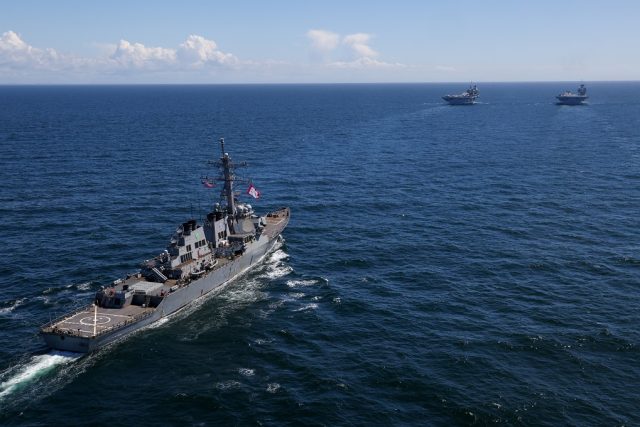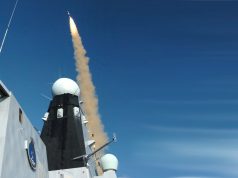
US Navy guided missile destroyer USS The Sullivans (DDG 68) assumed the role of air defense commander for the Royal Navy’s HMS Queen Elizabeth carrier strike group, in support of joint operations and interoperability training.
The US destroyer served in the role during the international carrier strike group’s time in the Eastern Mediterranean Sea. HMS Queen Elizabeth is currently operating in the Middle East, having transited the Strait of Hormuz early July.
The UK CSG deployment began on May 22, and will see the task group sail to Japan and back over a span of seven-and-a-half-months. The task group will visit 40 nations, including India, Japan, Republic of Korea and Singapore in a deployment covering 26,000 nautical miles.
The Sullivans is operating under tactical control of UK CSG providing multi-warfare defense to the Royal Navy aircraft carrier HMS Queen Elizabeth (R08).
The UK CSG’s transit of the Mediterranean Sea provided an opportunity to train and exercise with our NATO allies and regional partners to include operations with Italian and French navies and air forces.
“Taking air defense commander duties was the culmination of our pre-deployment training with the CSG during exercises Joint Warrior and Strike Warrior” said Cmdr. David Burkett, commanding officer of The Sullivans.
The Sullivans is the only US ship operating as part of CSG21. US Marine Corps F-35Bs, pilots, and support personnel are part of the air wing embarked on HMS Queen Elizabeth. CSG21 is comprised of HMS Queen Elizabeth, HMS Defender, HMS Diamond, HMS Kent, HMS Richmond, RFA Tidespring, RFA Fort Victoria, The Sullivans, Dutch frigate HNLMS Evertsen, and a UK submarine.
After its Mediterranean and Middle East stints, HMS Queen Elizabeth will be heading to the Indo-Pacific for large-scale exercises with US, Australia, France, Japan, New Zealand and Korea in the Philippine Sea next month. HMS Queen Elizabeth will operate with a US Carrier Strike Group, which according to the defense ministry, will be the largest concentration of F-35 jets to date.
The exercises were announced by the UK defense ministry following a visit of UK defense secretary Ben Wallace US Indo-Pacific Command (INDOPACOM) in Hawaii, where he met with the command’s head, Admiral John C. Aquilino.
Complex exercises like these will enable the Royal Air Force 617 Squadron to develop F-35B interoperability with partner nations, the defense ministry said. These air exercises will build upon the capability development that 617 Squadron achieved through the combat missions mounted from the Carrier in the East Mediterranean, during a dedicated period in support of Operation Shader, the UK mission to defeat Daesh in Iraq and Syria.
The Carrier Strike Group will also undertake anti-submarine exercises with US Pacific Fleet with allied submarines, helicopters and P8 maritime patrol aircraft.


























